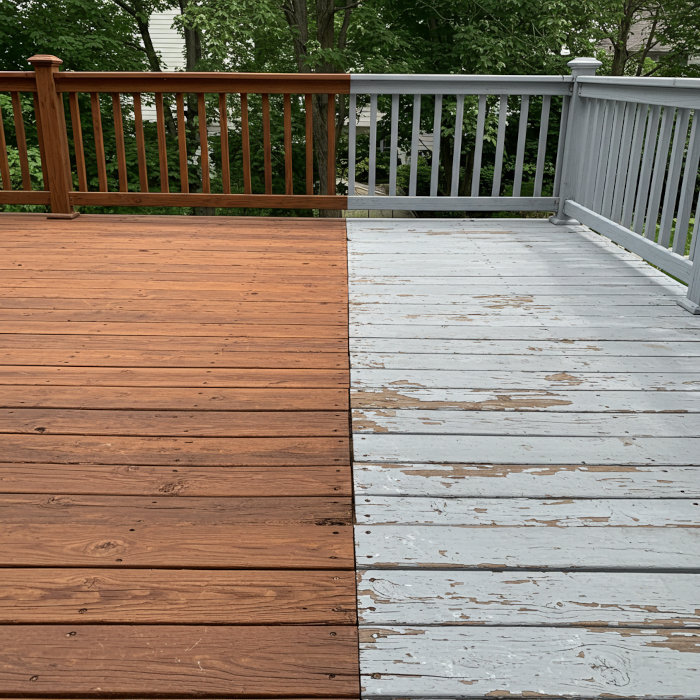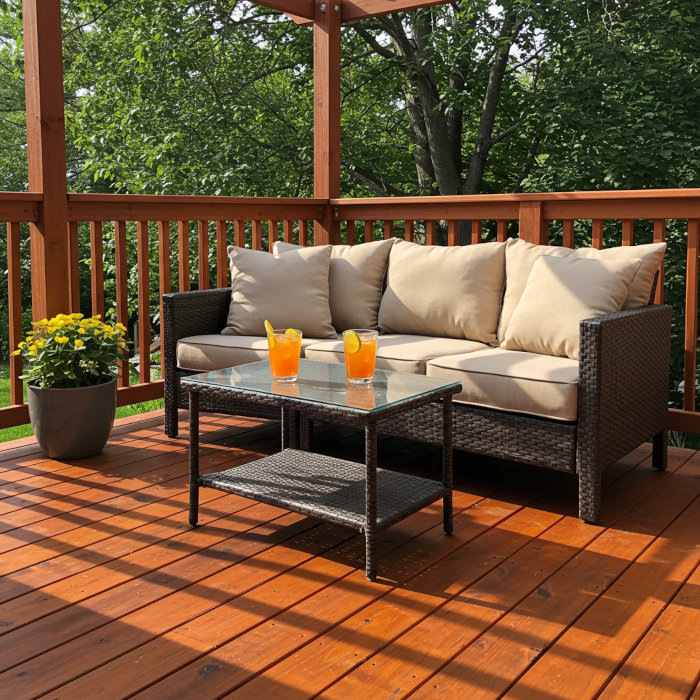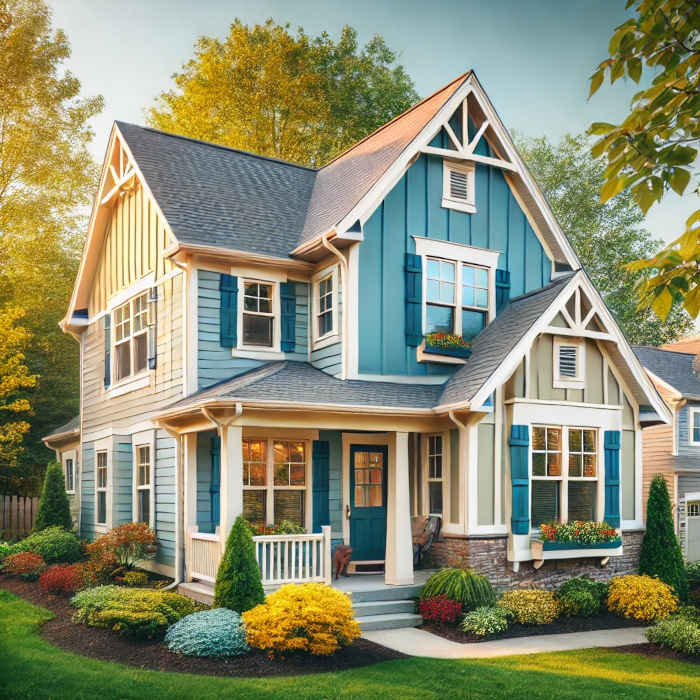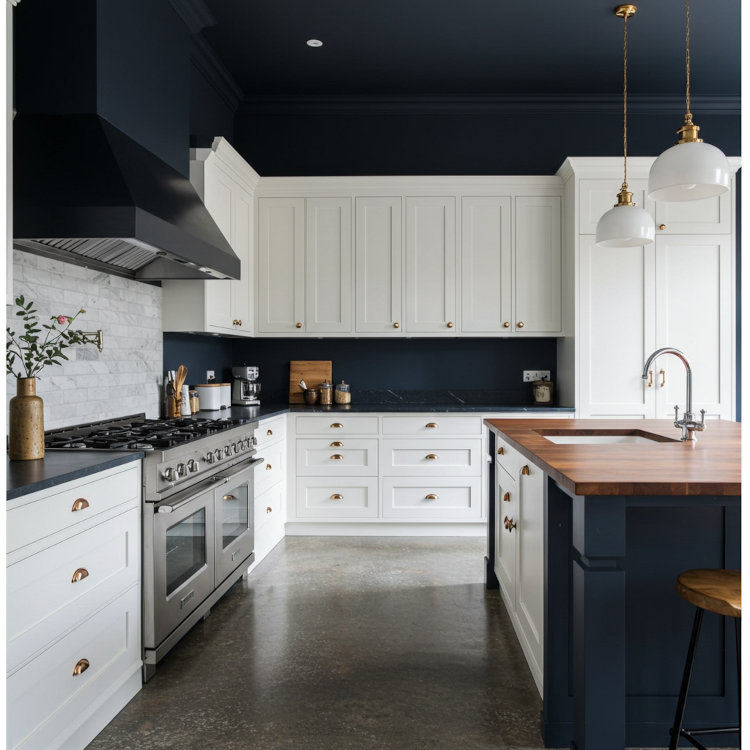As an Amazon Associate, I earn from qualifying purchases. Privacy Policy / Terms
Summer is when your deck comes to life. It becomes the space where iced tea meets golden hour, where grills sizzle and bare feet touch warm wood. But with the beauty of summer comes its biggest challenge, heat. Sun, humidity, and daily foot traffic can do serious damage to outdoor wood. So if your deck is ready for a refresh, there’s one question that matters most: Should you stain it or paint it?
The answer depends on how you want it to look, how much upkeep you’re willing to do, and how your deck handles extreme weather. Let’s walk through the differences and find out which finish holds up best when summer turns up the heat.
What’s the Real Difference Between Staining and Painting a Deck?
Staining and painting may serve a similar purpose, protection and style, but they work very differently. Stain penetrates the wood and allows its texture and natural grain to show through. It creates a more rustic, organic look and doesn’t form a solid layer over the surface. Paint, on the other hand, coats the wood entirely. It hides imperfections, adds bold color, and gives the surface a more uniform appearance.
When summer heat enters the equation, the way each product interacts with wood becomes especially important. Your deck isn’t just standing there, it’s expanding, contracting, breathing, and aging with every sun-soaked day.
How Deck Stain Handles the Heat
Deck stain is built to move with the wood. Because it soaks into the surface, it allows the deck to expand and contract naturally without trapping heat or moisture. This flexibility is key in the summer, when temperature swings and UV exposure are at their peak. A good stain resists blistering, fading, and cracking even when the sun is relentless.
Darker stains tend to offer more UV protection, but lighter ones can still do the job, especially if reapplied every few years. That’s another advantage of stain, it’s easy to maintain. When it starts to fade, you can re-stain without having to scrape or sand the entire surface. For homeowners who prefer a natural finish and want something that weathers gracefully, stain often proves to be the low-stress option in high heat.
How Paint Reacts to Summer Weather
Paint gives your deck a crisp, bold look, but it has a tougher time staying flawless in the heat. Because it forms a solid film over the wood, it doesn’t allow the surface to breathe as freely. As the boards heat up and swell, the paint layer can start to crack or peel, especially in full sun.
Moisture is another concern. If your deck wasn’t completely dry before painting or if humidity gets trapped under the surface, bubbling and blistering can follow. And while bright or dark paint colors may look stunning, they tend to absorb heat quickly, making the deck surface uncomfortably hot to walk on during peak sun hours.
When paint begins to fail, it doesn’t fade gracefully. It flakes, chips, and calls for major prep work before you can fix it. That said, if you’ve got an older deck that needs cosmetic help, or you want to make a dramatic design statement, paint can still be a worthwhile choice, especially for vertical surfaces like railings that are less exposed to wear.

Comfort and Style: What to Expect Underfoot
One overlooked factor is how your deck feels on a hot summer day. Painted surfaces, particularly those in dark colors, can heat up fast. Stained decks usually run cooler, especially when the finish is semi-transparent and the wood grain remains exposed. Traction also differs. Paint can be slippery when wet unless additives are included, whereas stain generally maintains the natural texture of the wood for a better grip.
For families or barefoot wanderers, comfort counts. If your deck gets full sun all day, lighter stains often offer the most pleasant experience underfoot.
Don’t Forget the Type and Condition of Your Deck
The condition of your wood also plays a role in what finish works best. Newer wood, or high-quality materials like cedar or redwood, tend to shine when stained because the grain and character are on full display. Older decks with weathered boards or patchy repairs may benefit from paint’s ability to conceal imperfections and create a cleaner overall appearance.
Many homeowners find a hybrid approach works best stain the horizontal surfaces for better durability and comfort, and use paint on the railings or trim to add a pop of color and visual interest.
Which Finish Really Holds Up Better in Summer?
If your deck is exposed to intense summer heat and direct sun all day, stain typically handles the abuse better. It fades naturally over time, is easier to maintain, and avoids the major peeling issues that come with paint. That doesn’t mean paint is a bad option; it just requires a little more commitment. With careful application and a willingness to touch it up, paint can absolutely thrive in the right setting, especially on shaded decks or for homeowners who love a bold look.
So what’s the verdict? If you’re after durability, breathability, and a natural aesthetic that won’t punish you in the summer months, stain is often the smarter choice. But if style and coverage matter more, and you’re ready to invest in maintenance, paint still has a place in your backyard.
Final Thoughts: Let Summer Be the Guide
There’s no one-size-fits-all answer. It all depends on your deck’s condition, your personal style, and how much time you want to spend on upkeep. Summer is meant for enjoying your space—not battling peeling paint or sun-bleached boards. If you love a natural look and want something that weathers gently over time, stain might be your best bet. If you’re drawn to bold color and a crisp finish, paint can absolutely work—with the right prep and commitment. And if you’re not sure which route to take, or simply want the job done right without the hassle, this is the perfect time to connect with experienced deck painters near you. Let the pros handle the heat while you enjoy your deck the way it was meant to be: as a sun-drenched escape right in your backyard.
Views Expressed Disclaimer
The views, opinions, and information presented in this article are for informational purposes only and do not necessarily reflect the official policies or positions of Chagrin Falls Painting. While every effort has been made to ensure accuracy, Chagrin Falls Painting is not liable for any errors, omissions, or decisions made based on the content provided. Readers are encouraged to consult professionals for specific advice or assistance related to their unique circumstances.








